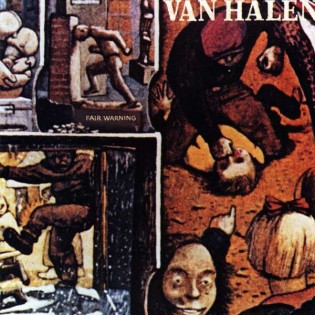
Track listing:
1. Mean Street
2. “Dirty Movies”
3. Sinner’s Swing!
4. Hear About It Later
5. Unchained
6. Push Comes To Shove
7. So This Is Love?
8. Sunday Afternoon In The Park
9. One Foot Out The Door
“And someone said ‘Fair Warning!’
Lord, strike that poor boy down.”
– Van Halen, 1981
| Release Date: | April 29, 1981 |
| Recorded: | Early March – Early April 1981 |
| Length: | 30:58 |
| Producer: | Ted Templeman |
| Preceded By: | Women and Children First |
The favorite album of many fans, Fair Warning, contains some of the fiercest, hardest music that Van Halen ever made. For the band’s fourth album, Eddie delved into longer, darker, and more aggressive guitar-oriented material than ever before. His pure genius is all over this album. Release date: April 29th, 1981.
Fair Warning presents every lovable facet of Van Halen in one quick package. From the opening blitzkrieg riff of “Mean Street” to the manic panic rumble of “One Foot Out the Door,” it’s all here: David Lee Roth’s hilarious, incoherent ramblings and gratuitous screeches, Eddie Van Halen’s gold standard avant-garde fretwork, and the rhythm section’s loose and tight groove that meshes behind-the-beat funk with hard rock’s cataclysmic wallop. The songs are particularly strong. The arrogant swagger of “Sinner’s Swing!” the heart-dropping melodicism of Eddie’s guitar work throughout “Hear About it Later,” the tongue-in-cheek taunting at the heart of “Unchained,” and the bizarre, haunting synthesizer churn of “Sunday Afternoon in the Park,” this is rock n’ roll as one breathless rollercoaster ride. With the absence of a hit single, it is sometimes overlooked, but rest assured Fair Warning is one of the most original and exciting releases of the 1980s.

Never-before-seen lyric sheets!
We have unearthed David Lee Roth’s handwritten lyrics for the first 7 songs on the album. Note that three songs on Fair Warning had different working titles than the titles that ended up on the album!
View these lyrics by clicking on the song links at the top of this page.
Torn between his new domestic bliss and a helter-skelter career in Van Halen, Eddie grew disillusioned. Much of this album was written in the early morning hours when Eddie and Donn Landee would retreat to the studio after the rest of the band had gone home. This practice signaled a turning point in Van Halen’s career, Edward was becoming increasingly frustrated about not being able to express himself the way he wanted to; he felt he was growing musically but was being suppressed by Ted Templeman and Roth. Tensions between the guitarist and the vocalist increased, and Edward briefly considered quitting the band. Alex convinced him to stick it out, and Fair Warning was the result. However, the anger and unhappiness comes through in the music, giving the album its dark undertones. “On the whole album I was angry, frustrated, and loose,” Eddie admitted.
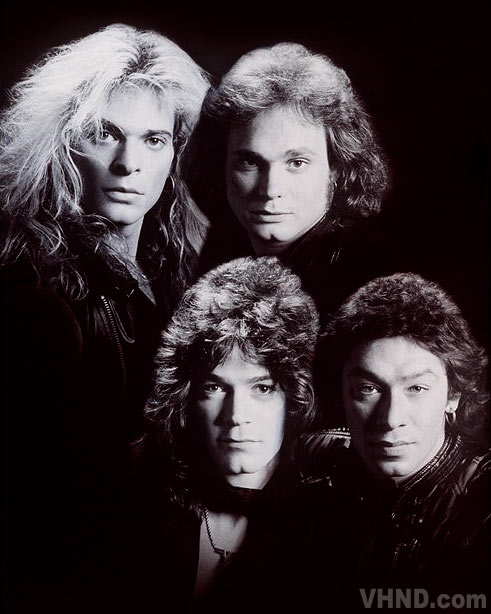
Consequently, Fair Warning was a major departure from the playfulness of Women and Children First. Before work began in the winter of early 1981, Roth had spent a few royalty checks for a glamorous jungle adventure to Haiti and had been punched with an emaciated paw in his conscience. He saw poverty and corruption in doses unavailable in Pasadena or Indiana, and he came back to the fractious Van Halen camp ready for a revolution of his own.

This album took a mere 12 days to record at a cost of approximately $40,000. The Fair Warning sessions were also the seed for Eddie’s desire to have his own studio, and in fewer than three years, 5150 Studio became a reality in his own backyard.
The record brought back the dynamics of the debut album, the silences and rhythm-section showcases that formed the full heavy metal machine. At the same time, it was much denser. Musically, almost every song had thick overdubs on the rhythm and lead guitar tracks, and the band recorded using smaller studio amps to control the sound instead of capturing it directly from typical high-decibel stage rigs. The sunshine backing vocals were held to a minimum.
This album declared the band’s reign over the rising tide of heavy music. They were pictured uncharacteristically wearing black leather, nodding to the British metal sound just arriving in the United States. Yet Van Halen remained wary of the term “heavy metal.” They had Americanized heavy metal, styling their hair and projecting exuberance and confidence instead of the dour attitudes of their European counterparts. As Roth said, “This is not like Judas Priest and Black Sabbath–that’s for young boys. I maintain that Van Halen is for everybody.”

Oozing with menace, Fair Warning was the closest Van Halen ever came to a thematic concept album, a suite of songs about life in the ruts. The opening cut, “Mean Street,” became an anthem. Beginning with Eddie’s fast-motion slapping pattern on high and low E strings, a technique he adapted from funk bass, the track stepped into skid-row territory instead of strolling down Main Street. The main riff was lifted from the band’s mid-seventies staple “Voodoo Queen,” while the funky transitional riff came from “She’s the Woman.” Now mostly past the point of reusing old songs in complete form, Eddie was chopping and rearranging the hot moments of his back catalog.

Fair Warning was a masterpiece made in the studio, not honed like past albums in the clubs before recording. While demoing the song as a work in progress, Dave slurred the lyrics in a monotonous jive, hustling the band toward a bang-up heavy metal can-can finale, far flashier than anything used on the album.
Eddie again picked up a guitar slide for “Dirty Movies,” though he had trouble reaching the high notes on his SG-shaped Gibson Les Paul Junior. Ever one to bend his tools to fit his needs, he sawed a chunk off the vintage guitar so he could play the song the way he thought it should sound.
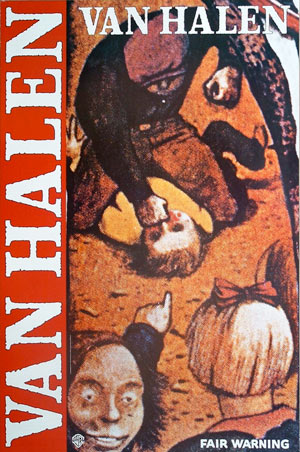
Eddie claimed “Push Comes to Shove” was a nod to dub reggae, instigated by Roth. If so, the template for dread-rock fusion was years ahead of similar sultry tracks by Rastafarian punks Bad Brains or the Red Hot Chili Peppers.
Saved as a big punch for the start of side two, “Unchained” was the biggest riff since “Runnin’ with the Devil“–a barrel-chested head-banger built on crunchy guitar, Roth’s screams, and a plowing bass line that left Michael Anthony free for high-pitched backing vocals. At the end of the guitar solo, the band pulled back while Roth ribbed the control room like a street-corner wiseguy running a friend through the dozens. “Hey man, that suit is you! You’ll get some leg tonight for sure!”
“C’mon Dave, gimme a break,” Ted Templeman punched in from the control room, and a legendary ad-lib was born, a peek behind the curtain of the Wizard of Van Halen. As with most of the band’s off-the-cuff turns, however, each peck of brilliance was meticulously rehearsed. On the preproduction versions of “Unchained,” Roth delivered the “Gimme a break!” line himself.
Eddie and Templeman often came to screaming fights about overdubs, with Templeman refusing to allow multitracking that the band could never re-create onstage. He nixed a version of “Unchained” where Eddie had split his guitar with a harmonizer so that the sound in the right speaker was a muddy octave lower. Some days they were best friends, sometimes Templeman was the enemy. Eddie later admitted to sneaking into the studio with engineer Donn Landee behind Templeman’s back. Significantly, Eddie’s need for more control pushed him to begin plans to build his own home studio with Landee’s help.
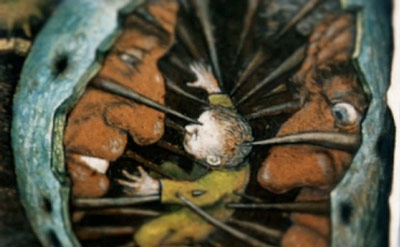
Though brief instrumentals like “Eruption” were now part and parcel of a Van Halen package, Fair Warning‘s “Sunday Afternoon in the Park” was a complete departure. Composed quickly by Eddie on an Electro-Harmonix synthesizer, allegedly for his new wife, the funky two-minute track fit the album’s mood perfectly. The synth rock pulsed as hard as any rudimentary electro music, resembling squelching European synth devils like the Italian horror soundtrack group Goblin or England’s cold-blooded Gary Numan.
Closing the record was “One Foot Out the Door,” a fast rocker built on another burbling synth line. The song was reputedly captured in one take as the band was literally heading out the door of Sunset Sound after finishing the record.

After a reviewer in Rolling Stone predictably tore up the album, Valerie Bertinelli threw the band a congratulatory celebration. Regardless of what a magazine that had yet to put them on the cover thought, Fair Warning established the band artistically and proved Van Halen mattered beyond a party environment. At one point or another, all four members later declared it their favorite early Van Halen record and defended its virtues.
Cover Art:
The album cover is an odd collection of drawings, some panels loosely corresponding to a song on the album. The artwork is from a painting entitled “The Maze” [see below] by troubled and mentally unstable artist William Kurelek. For the fascinating story on the late William Kurelek, see The Story Behind Van Halen’s Fair Warning Album Cover Art.
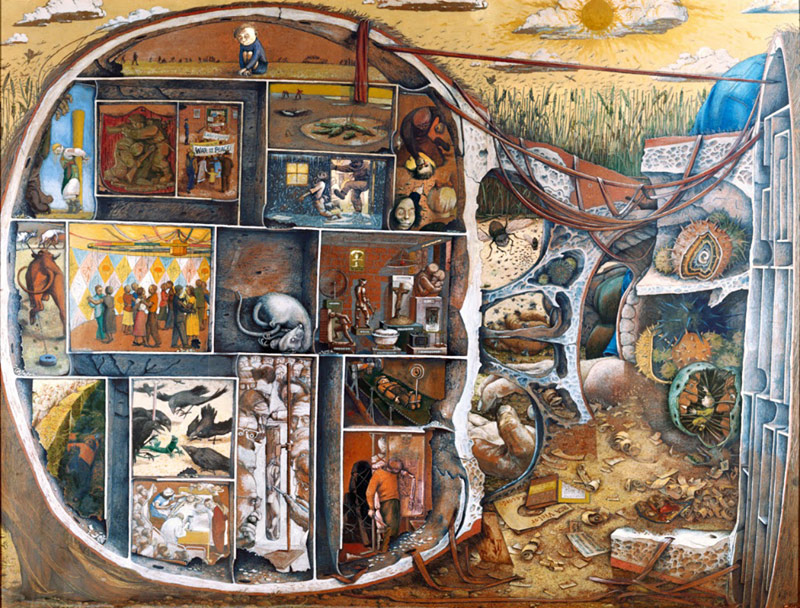

Alex had discovered the painting, and instead of a collage he initially was interested in only one image: a man ramming his head into a brick wall. The images were chosen and arranged by Van Halen’s lighting designer turned all-purpose creative director, Pete Angelus. When the painting was used for the Fair Warning album cover, it was severely cropped and modified, ostensibly to highlight the most striking images inherent in the work.
Videos:
Live videos for “Unchained“, “So This Is Love?“ and “Hear About it Later“ were filmed at the Oakland Coliseum during a three-night stint in Oakland, CA (06/11/81-06/13/81). The videos debuted on an episode of the Don Kirshner Rock Concert Seriestelevision program.
Fans have always wondered if a complete Oakland concert exists on film.VHND addressed the mystery of the Fair Warning tour footage in our article, The Van Halen Holy Grail: 1981 Oakland Footage.
Many fans are unaware that a fourth, non-concert video was also filmed, but the footage was never edited because the record label saw no need to promote an album without a single. For the music video, the band shot themselves in a foggy forest near giant sculptures of brontosaurus’s and other dinosaurs. No known copies of it exist outside the band’s vaults. Photos from the shooting of this unknown video appeared in the first issue of The Inside magazine, and will be featured on VHND in the near future.
Sales:
It was released on 04/29/81 and reached #6 on the U.S. charts (entering the charts on 05/30/81) and #49 on the U.K. charts (entering on 05/31/81). It was certified gold on 07/07/81, platinum on 11/18/81, and double platinum on 08/04/94. The album was remastered and rereleased on 09/19/00. The sales haven’t been counted since 2003, so it’s possible that it could have broke 3 million sales in the U.S.
Dark Victory: Billy Corgan assesses his favorite Van Halen album, Fair Warning
The Smashing Pumkins founder reviews the album (from the April 1996 edition of Guitar World):
If you’ve ever seen the “Unchained” video, you’ve seen a band at its public epiphany. Beautiful and free, Van Halen ruled the world with a wink and a smirk. The rockers dressed like them and the girls all wanted to fuck them–the ultimate forms of teen tribute. When people found out that I played guitar, the question I heard most often was, “Can you play ‘Eruption’?” Such was the suburban world, circa 1981.
I used to stay at this guy’s house where my high school metal band practiced, and I remember getting up early one morning and playing along to Fair Warning. It struck me, then as now, as a mean, dark album. The worst-selling of all the Van Halen albums, Fair Warning openly displays the conflict between the party- ‘Halen front and the real hard life. This was a tired and taxed band, and if the lyrics and guitar riffs have anything to say, it is that they were living a freaky nightmare world of freaks, bleaks, decadents and hollowed souls. This is Van Halen blues as they lived it.
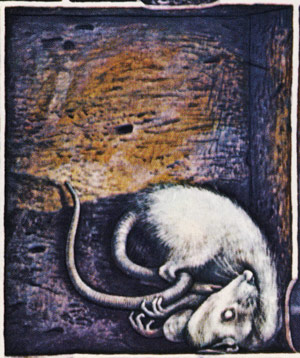
The album opens with an insane, virtuoso Eddie riff, daring you to try and play along. From there he drops us down and dirty into the ‘Halen “Mean Street.” The riffs are menacing, the lyrics nihilistic, and the grooves taut and funky. “Dirty Movies” flashes a prom queen turned porno queen, then segues into the standard Van Halen breakdown with David Lee Roth encouraging her to “take it off, take it all off.” Check out the third song, the double-timed “Sinner’s Swing!” A woman chases our humble ‘Halen narrator. Does he want her, or does she want him? The shadows are never clear on this album. And Eddie is at his guitar meanest, sounding as if every track was recorded late at night, cigarette in headstock and head down. Ed riffing into the cool California night.
“Unchained” is quintessential Van Halen. Taut voltage riffs slither into melodic lead drops, and yet another famous D.L.R. kickdown: “Give us a break, Dave.” “One break–coming up!”
Fair Warning is consistently bluesy and unrepentant, with great titles like “Push Comes to Shove” and the classic “So This is Love?” The guitar playing is vintage brown, all dirt and molasses. The album even ends oddly, the synth-creep “Sunday Afternoon in the Park” giving way to “One Foot Out the Door,” with Eddie soloing madly over out-of-control synths as Dave is chased by demons and someone’s mean old man.
Fair Warning opens a small window into the true night-world of Van Halen, moving at great speed.

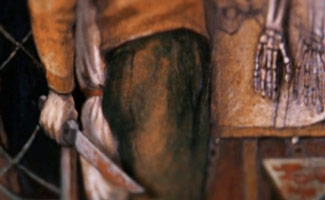
Writing Credits: The information on our Fair Warning album page and songs pages came from several sources: VHND’s own research, VHND contributing writer Scott Essman, “Everybody Wants Some: The Van Halen Saga“, by Ian Christie, the Van Halen Encyclopedia by CJ Chilvers. The Van Halen News Desk has recently acquired the Van Halen Encyclopedia and we will be adding huge sections of the VHE to the VHND over the next year.
Artwork: The unique artwork on our Fair Warning album and songs pages is all from William Kurelek’s painting, “The Maze“.